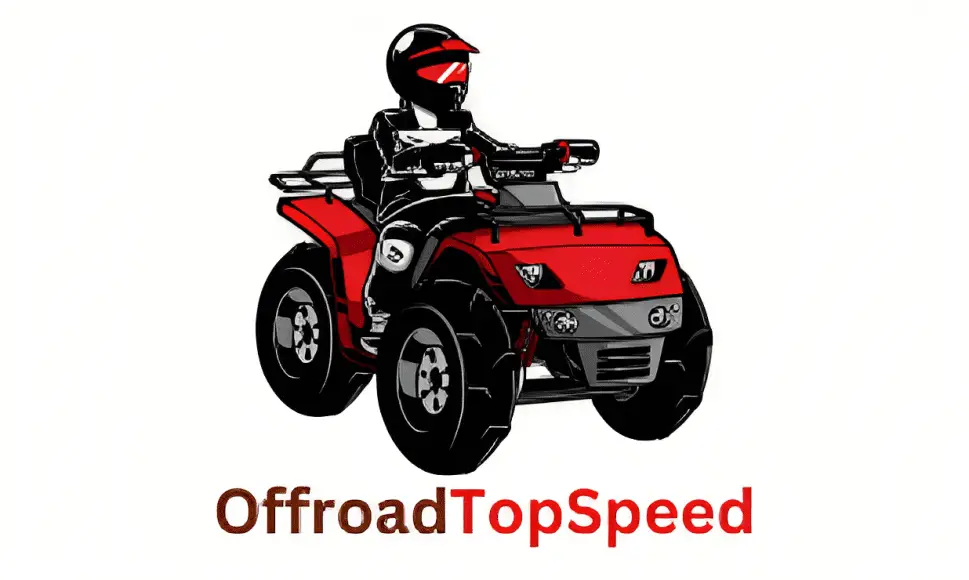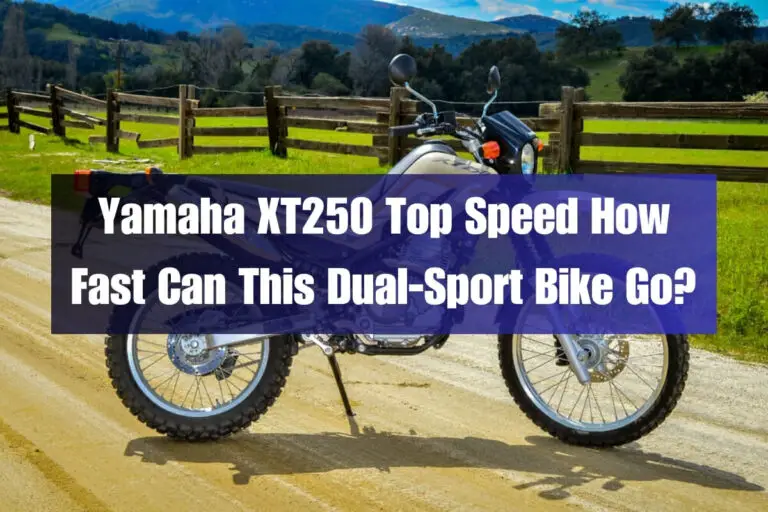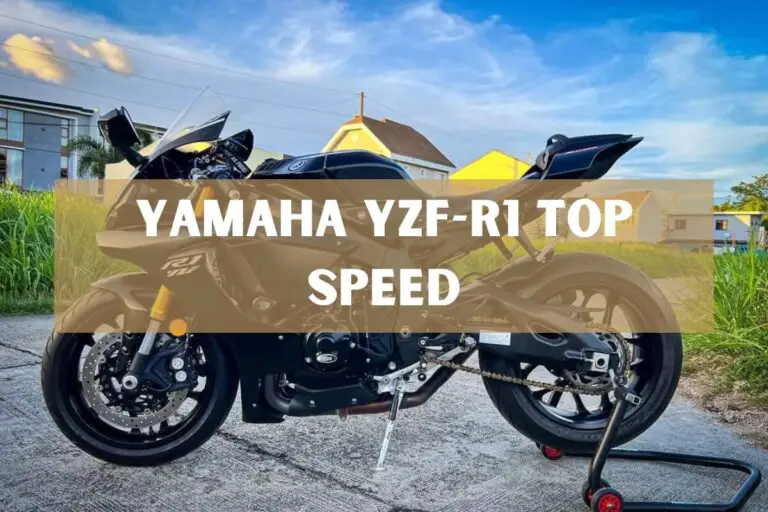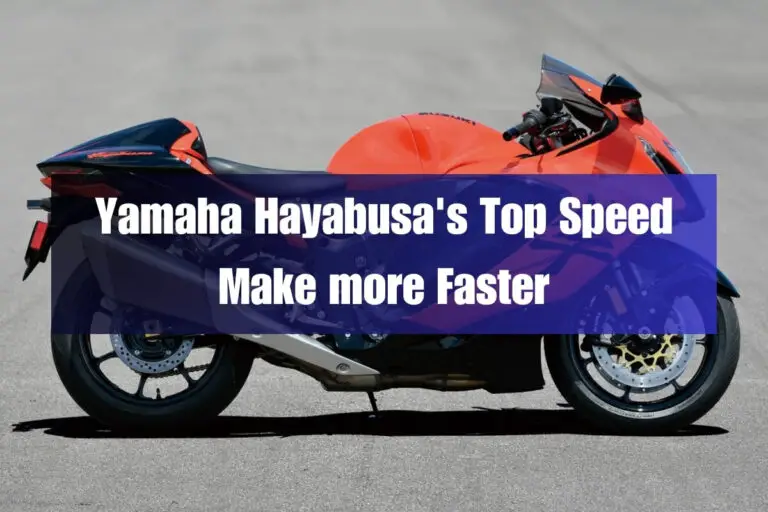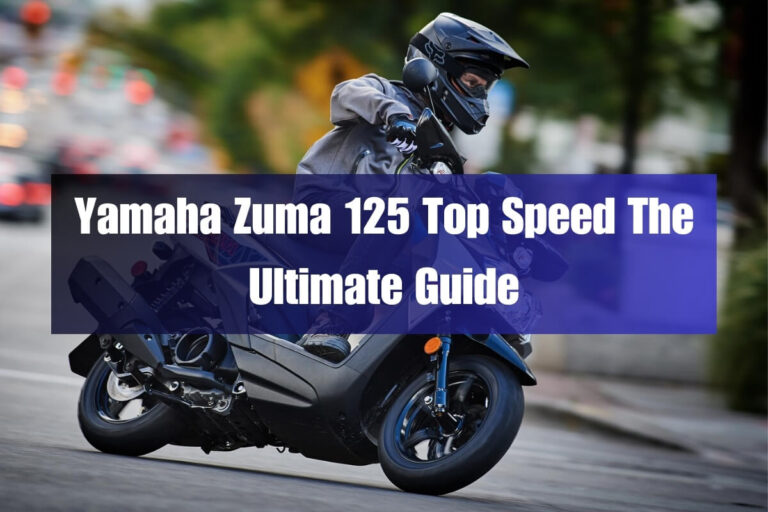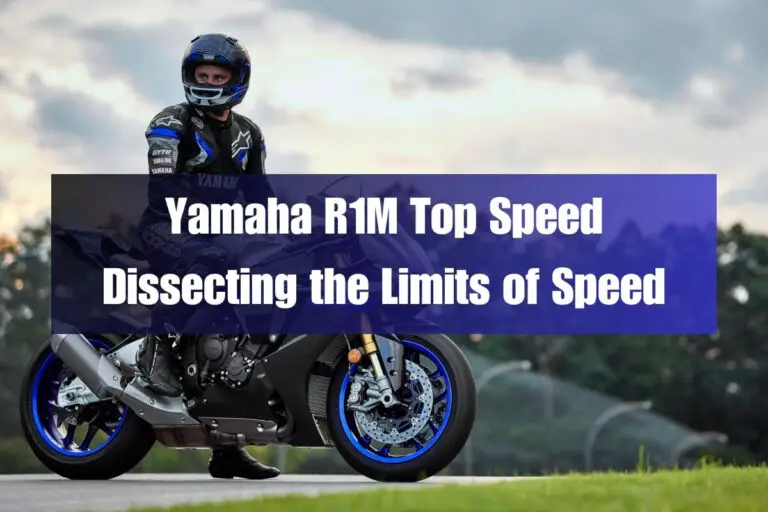Yamaha YZF R6 Top Speed: 165 MPH Supersport Thriller
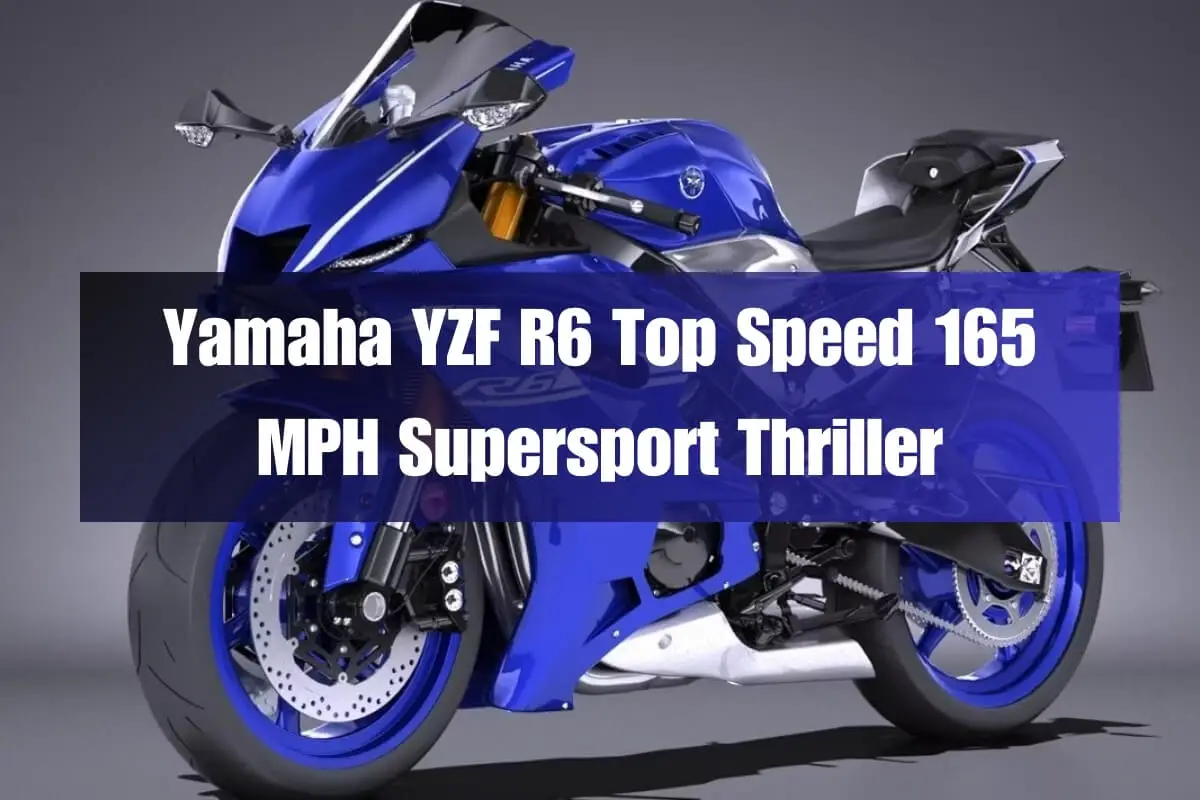
Imagine tearing down the road at blistering speeds, the engine’s roar filling your ears as the world blurs around you. For Yamaha YZF R6 owners, hitting insane top speeds isn’t just a dream – it’s an adrenaline-pumping reality. This iconic supersport motorcycle is renowned for its lightning-fast acceleration and breathtaking velocity, making it a favorite among speed junkies worldwide.
In this article guide, we’ll dive into the Yamaha YZF R6’s top speed capabilities, performance benchmarks, and what makes this race-bred machine an absolute thrill on the open road.
Yamaha R6 Model Overview
| Specification | Value |
|---|---|
| Engine | 599cc liquid-cooled inline-4 |
| Power | 118 hp @ 14,500 rpm |
| Torque | 47 lb-ft @ 10,500 rpm |
| 0-60 mph | 3.4 seconds |
| 0-100 mph | 9.9 seconds |
| Top Speed | 165 mph (265 km/h) |
The Yamaha YZF R6 is a pure supersport motorcycle that has been leaving its mark on tracks and streets since its introduction in 1999. Derived from the legendary R1 superbike, the R6 was designed to dominate the 600cc supersport class with its featherweight chassis, potent inline-four engine, and aerodynamic full-fairing bodywork.
Over the years, the R6 has evolved to incorporate advanced electronics, improved ergonomics, and even sharper handling. But one thing has remained constant – its relentless pursuit of class-leading speed and acceleration. From the track-focused 2024 race model to previous street-legal iterations, the R6 has consistently delivered breathtaking straight-line performance.
Blistering Speed and Performance
When it comes to raw speed, few production motorcycles can match the ferocity of the Yamaha R6. Boasting a top speed of 165 mph (265 km/h), this supersport rocket will leave you feeling like a fighter jet pilot as the world rushes by in a blur of color.
But blistering top-end isn’t the only speed trick up the R6’s sleeve. Thanks to its high-revving 599cc inline-four engine, this bike can accelerate from 0-60 mph in a mind-boggling 3.4 seconds and crack the 100 mph barrier in under 10 seconds from a standstill. These acceleration numbers put the R6 in the same territory as exotic supercars costing exponentially more.
Achieving such explosive speed requires a perfect symphony of engineering elements. The R6’s lightweight aluminum chassis, race-tuned suspension, and slippery aerodynamic bodywork all contribute to its ability to build speed rapidly. An oversquare engine design with a 13.1:1 compression ratio allows this inline-four to rev freely to a stratospheric 16,400 rpm redline, maximizing power output.
Putting the R6’s Speed to the Test
All the spec sheets and numbers in the world can’t truly convey the visceral thrill of piloting the R6 at wide-open throttle. As someone who has had the privilege of test riding this speed demon, I can attest that the experience is simply mind-blowing.
Twisting the grippy throttle launches you forward with relentless thrust, the front wheel fighting to leave the ground as the engine’s roar builds to a screaming crescendo. The slick-shifting six-speed gearbox allows you to keep the fury of acceleration pinned as you rapidly swap cogs. Triple-digit speeds arrive in a blink, yet the R6 remains poised and stable, daring you to push harder.
Even as the speedometer needle arcs past 150 mph, the Yamaha’s aerodynamic package and rigid aluminum chassis provide incredible high-speed composure. The wind buffets your body, but the core experience centers on an unwavering sense of control and eagerness to continue accelerating. It’s a profound feeling of connection between human and machine, unified in the pursuit of blistering velocity.
Owners’ Take: Yamaha R6 Reviews
Of course, no motorcycle review would be complete without hearing directly from the real experts – the owners themselves. Scouring Yamaha R6 owner reviews reveals a few common storylines that highlight this bike’s strengths and weaknesses.
On the positive side, owners rave about the R6’s addictive acceleration, razor-sharp handling, and impressive build quality and reliability. Many praise the sophisticated electronics package that includes lean-angle sensitive traction control and ABS for added confidence when riding at the ragged edge.
“The acceleration on this bike is simply mind-blowing. You’ll be breaking criminal speed limits before you can blink if you’re not careful with the throttle,” one owner raved. Another chimed in, “This thing corners like it’s on rails. The front-end feel is sublime, giving you so much confidence to lean it over.”
However, owners also point out a few drawbacks to the R6’s decidedly track-focused nature. The aggressive riding position can become uncomfortable on longer rides, and some have experienced issues like stalling, misfiring, or starting difficulties. Decent gas mileage is another sacrifice at the altar of speed.
R6 vs The Competition
In the ultra-competitive 600cc supersport arena, the Yamaha R6 faces off against some impressive machinery from Honda, Kawasaki, Suzuki, and Triumph. How does the R6 stack up when it comes to pure straight-line speed?
Against longtime Japanese rivals like the Honda CBR600RR and Kawasaki ZX-6R, the Yamaha hangs remarkably close in terms of acceleration and top speed. The R6 is just a hair quicker from 0-60 mph and tops out at 165 mph compared to 164 mph for the CBR600RR. The Triumph Daytona 675R lags slightly behind in standing starts but edges out the R6 with a 166 mph top speed.
Affordable Sportbike Alternatives to the R6
For riders looking for screaming supersport thrills on a smaller budget, a few alternatives to the R6 stand out:
- Kawasaki Ninja 650: Boasting a torque-rich 649cc parallel-twin and a ~135 mph top whack, the Ninja 650 delivers accessible and affordable performance.
- MV Agusta F3 675/800: These exotic Italian triple-powered missiles can hit 160+ mph while wrapping you in gorgeous styling.
- Zero SR/S: Taking a radically different electric approach, the Zero SR/S tops out around 124 mph but offers incredible straight-line acceleration.
No matter the competition, the Yamaha R6 cements its status as a leader of the supersport pack through its exhilarating speed and acceleration across the board.
Extracting Even More Speed
For some adrenaline junkies, even the R6’s mind-bending velocity straight from the factory isn’t enough. Fortunately, a healthy aftermarket exists for those seeking to extract even more top-end from this Yamaha missile.
A popular first step is remapping the engine’s ECU to run more aggressive fuel and ignition maps. This simple “plug and play” modification can effectively increase the R6’s rev ceiling while optimizing power output. Exhaust system upgrades are also common, using lighter-weight mufflers and freer-flowing components.
More hardcore speed enthusiasts might explore upgrading internal engine components like high-compression pistons, adjustable cam gears, or even upgrading to a larger-displacement stroker motor. With enough money and effort, the R6’s inline-four can be built into an absolute monster on the drag strip.
However, make no mistake – these modifications will likely impact emissions compliance, so they should only be installed if you plan to use the bike exclusively on closed race circuits.
Pricing and Availability
While Yamaha discontinued the street-legal version of the R6 in most markets after the 2020 model year due to tightening emissions regulations, the track-focused 2024 Yamaha YZF-R6 is still available as a race-only model for those seeking maximum velocity.
Pricing for the 2024 R6 typically ranges from $15,650 for the base model up to around $18,600 for the high-spec Race Blu variant with premium components.
Who is the Yamaha R6 For?
With its laser-focused design and incredible performance capabilities, the Yamaha R6 certainly isn’t a motorcycle for everyone. This supersport rocket demands a high degree of skill, commitment, and self-control from its pilots.
Experienced riders who live for track days, canyon carving, or brief bouts of legal street hooliganism will feel most at home with the R6’s aggressive power delivery and hardcore sporting ergonomics. The ability to consume gasoline in frightening quantities and a relative lack of comfort on longer rides are trade-offs consciously made in the pursuit of speed.
On the other hand, the R6 would make for an extremely challenging and unforgiving first motorcycle for novice riders. Its potent inline-four power plant and race-bred handling require smooth inputs and a deft throttle hand to properly harness. Rookie mistakes could prove disastrous when piloting a motorcycle this performance-oriented.
For the right rider willing to embrace the R6’s focused mission, however, there are few better choices for accessible roadgoing performance and outright speed.
Common R6 Issues and Solutions
While the Yamaha R6 has developed an impressive reputation for reliability when properly maintained, there are a few common issues that tend to crop up as these bikes rack up the miles:
Battery Issues: A frequent complaint centers around battery drainage overnight or electrical issues like not staying properly idled. In many cases, upgrading to a higher-quality battery can solve inconsistent starting or electrical problems.
Throttle Body/Misfiring: Some owners have experienced throttle body malfunctions like surging, dead spots, or misfiring issues. Cleaning the throttle body assemblies or replacing bad throttle position sensors is often the fix.
Kickstand Switch: A faulty kickstand switch that kills the engine when the kickstand is down can be an annoying problem to debug.
For any persisting mechanical issues, it’s wise to consult factory service manuals and experienced Yamaha mechanics who understand the nuances of this high-performance engine package.
Safety First: Reliability & Handling
Despite its incredible straight-line performance, the Yamaha R6 was intelligently designed from the outset with impressive stability and control at higher speeds. This is a motorcycle that feels rock-solid and planted even when exploiting its double-ton top speed potential.
The R6’s stiff aluminum chassis, quality triple disc brake package, and sophisticated electronic rider aids all contribute to inspiring confidence when the speeds climb. Adjustable traction control and lean-angle sensitive brake controls provide maximum feedback and control even at the ragged edge of the tire’s limits.
In terms of overall reliability, the R6 has an admirable track record, especially for a machine bred to thrive on the racetrack. Owners who follow the recommended service intervals report trouble-free riding, even after accumulating impressive mileage on the odometer.
Yamaha R6 FAQs
Is the Yamaha R6 good for beginners?
In short, no – the R6 is not at all a good fit for first-time or novice riders. Its potent race-tuned engine requires an educated throttle hand to properly manage, while its aggressive ergonomics can quickly fatigue newer riders. A smaller-displacement, more user-friendly sportbike would be a far better option to start on.
Is the R6 street legal?
While previous generations of the R6 could be purchased for street use, the current 2024 model is offered solely as a track-only race bike due to emissions restrictions in many markets. Attempting to register one for street use would likely be an uphill bureaucratic battle.
What are typical R6 maintenance costs?
Routine maintenance costs like oil changes, brakes, tires, etc. for the R6 are on par with other high-performance sportbikes. However, insurance rates can be quite expensive given this model’s clear track bias and propensity for speed. Availability of some OEM parts can also sometimes be an issue.
Is the R6 fast enough for track days?
Absolutely – not only is the R6 plenty fast for casual track riding, it remains competitive at professional club racing levels as well. Its incredible acceleration and top speed combined with telepathic handling make this a phenomenal track weapon straight from the factory.
Final Takeaways
There’s simply no way around it – the Yamaha YZF-R6 is an absolute speed demon, a motorcycle laser-focused on delivering blistering straight-line acceleration and mind-numbing top speed thrills. With a 165 mph top whack and the ability to out-accelerate many exotic supercars, this race-bred supersport is a thriller for the speed-obsessed.
However, the R6’s remarkable performance does come with a few caveats. Aggressive ergonomics, frequent fuel stops, and a relatively unforgiving power delivery mean this isn’t a motorcycle for novice riders or those seeking touring comfort. Its high price point and lack of street legality for newer models also present obstacles.
But for those who crave elite-level speed and handling – and have the skill to properly exploit them – there are few better options than the Yamaha YZF-R6. This motorcycle represents the closest most riders can get to piloting an actual race bike on the street or track. For sheer velocity and acceleration bragging rights, the R6 remains in a class of its own.
